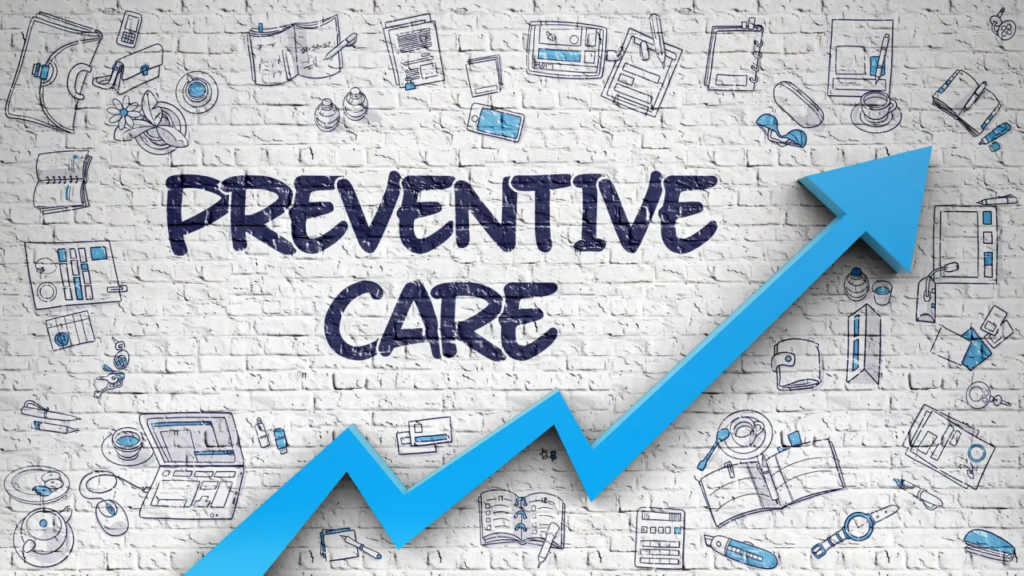
Health insurance is an integral component of American society and an invaluable way for people to live healthier lives. Individual policies or group plans offered at work – for instance as part of wellness programs – can all serve this purpose. But, despite its many advantages, Americans underutilize preventive care services. Why?
1. Cost
American health insurance premiums tend to be expensive and require consumers to make significant outlays for deductibles and copayments. Insurance company underwriting practices and public policies regarding coverage place a heavy economic strain on employers, insurers, and individuals – especially for families earning below the poverty threshold. Preventive care saves both money and lives. It can also lower healthcare system burdens. Immunizations, for instance, may help avoid expensive hospitalizations. Under the Affordable Care Act (ACA), private insurers are mandated to cover clinical preventive services without cost-sharing; however, there remains some variation in implementation; certain clinical preventive services are more beneficial in terms of cost savings and health outcomes than others.
2. Coverage
“Prevention is better than cure,” as the saying goes. With the Affordable Care Act requiring private health plans to cover preventive services without patient cost-sharing, it is vitally important that appropriate services reach those in need. Most health insurance plans cover preventive healthcare services and wellness programs that encourage healthier behaviors, so contact your provider for specific coverage details. Studies have revealed that the type of health insurance policy someone holds has an impactful influence on whether they will provide certain preventive care services. We discuss its ramifications and suggest measures to help ensure individuals receive needed preventive services when needed.
3. Convenience
Accessing health insurance gives employees access to an expansive network of healthcare providers. This enables them to choose their favorite doctors and specialists as well as avoid coverage gaps. Interviewees at stakeholder interviews confirmed that people value convenience in healthcare services and may even pay a premium to have such options readily available to them. Studies estimating convenience-related process utility indicate that patients do indeed value convenience in clinical preventive care. While results from limited research show no clear trend, they suggest that preferences related to convenience exist and could be substantial.
4. Health Risk
Clinical preventive services help mitigate chronic disease, illness, disability, and premature mortality by intervening to avoid or identify health problems (primary prevention), managing diseases at their early stages to slow or stop progression (secondary prevention), or encouraging healthy lifestyle choices (tertiary prevention). Unfortunately, clinical preventive services remain underutilized despite overwhelming evidence showing they improve health, longevity, and quality of life. Health insurance helps remove financial barriers to preventive healthcare by covering copayments and deductibles, yet insurers whose premiums are based on expected healthcare costs run the risk of adverse selection; people with higher-than-average costs tend to buy coverage, eroding profits.
5. Education
At first glance, investing in preventive healthcare measures that haven’t yet manifested themselves may seem counterproductive; however, doing so actually saves money in the long run. For example, taking daily aspirin to reduce blood clot risk reduces medical costs while increasing life expectancy. The education of individuals about the value of preventive healthcare encourages them to prioritize healthy habits. Health education also enhances quality of life and can increase productivity at work, leading to economic benefits for companies. Healthcare organizations can offer an array of preventive services, such as screenings, vaccinations, and health education. Wellness programs that reward people for improving their health are another popular incentive.
6. Behavioral Change
Lifespan and options will grow thanks to living a healthier lifestyle. There is a clear connection between leading an active and healthy life and cutting medical costs, so living such a life can help individuals save money and open doors in the future. Studies demonstrate the beneficial outcomes associated with smoking cessation, exercise, and diet changes on health outcomes; however, making changes is difficult. It takes hard work and persistence from all involved for people to adopt new behaviors. One common strategy for encouraging healthy behaviors among Medicaid enrollees is offering incentives. These are typically provided to encourage diet and exercise behaviors; incentives may be more successful if directed toward those who have more predisposing factors to change. Focusing healthcare efforts toward patient outcomes may also support healthier lifestyles.
7. Social Support
People in close, supportive relationships tend to experience less of the negative consequences associated with life stresses, acting as a buffer between mental distress and physical impairments. Social support can foster preventive health care by offering encouragement, information, and guidance that enable behavioral change needed to take advantage of preventive services. Industry experts assisting this interview process report that people are more likely to engage in preventive healthcare when provided with access to information, encouragement, and other forms of social support. As such, healthcare providers might want to evaluate whether community initiatives aimed at increasing this type of support are required.
8. Flexibility
Since the implementation of the Affordable Care Act’s preventive services coverage policy, millions of Americans who enroll in private health insurance through their jobs, the individual market, or Medicare have had access to medically recommended preventive services without copays or coinsurance premiums being assessed; such services include cancer screenings, well-baby visits, and immunizations. However, traditional approaches to group health insurance won’t cut it for today’s busy workforce. To address this situation, many employers now provide flexible benefits like FSAs and HRAs that enable employees to take control of their healthcare costs.
9. Accountability
The Affordable Care Act has made it easier for millions of Americans to enroll in private health insurance through both employer-sponsored plans and the individual market, improving access to high-quality care while decreasing medical debt burden. Clinical preventive services can either prevent the disease from emerging altogether or slow its progress, helping reduce chronic illnesses’ incidence and prevalence, disability associated with them, and premature deaths. Unfortunately, however, clinical preventive care remains underutilized. Interviewees noted the need for metrics that focus on outcomes, are aligned across payers, and include financial incentives or risk. To drive uptake, regulatory initiatives that increase transparency as well as increasing understanding among patients are also vitally important.
